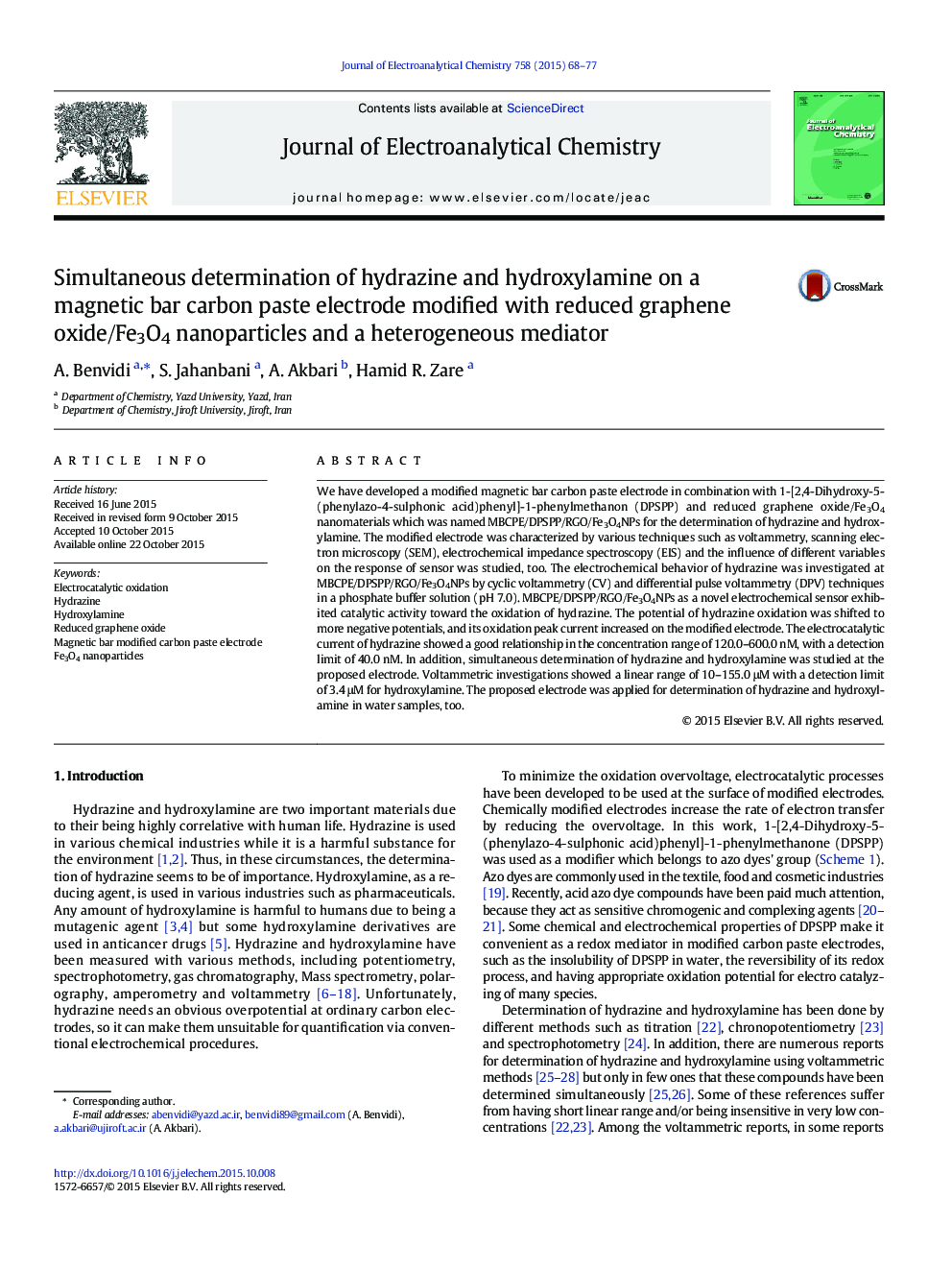| Article ID | Journal | Published Year | Pages | File Type |
|---|---|---|---|---|
| 218245 | Journal of Electroanalytical Chemistry | 2015 | 10 Pages |
•Magnetic bar was used in fabrication of electrode for completely adsorption of Fe3O4NPs to the electrode surface.•We have designed a MBCPE/RGO/Fe3O4–NPs for simultaneous determination of hydrazine and hydroxylamine.•The proposed electrode showed a detection limit as low as 40 nM for hydrazine.•Simultaneous determination of hydrazine and hydroxylamine was performed at the surface of electrode with satisfactory results.•The high sensitivity and selectivity, repeatability and stability of the electrode are the advantages of the proposed electrode.
We have developed a modified magnetic bar carbon paste electrode in combination with 1-[2,4-Dihydroxy-5-(phenylazo-4-sulphonic acid)phenyl]-1-phenylmethanon (DPSPP) and reduced graphene oxide/Fe3O4 nanomaterials which was named MBCPE/DPSPP/RGO/Fe3O4NPs for the determination of hydrazine and hydroxylamine. The modified electrode was characterized by various techniques such as voltammetry, scanning electron microscopy (SEM), electrochemical impedance spectroscopy (EIS) and the influence of different variables on the response of sensor was studied, too. The electrochemical behavior of hydrazine was investigated at MBCPE/DPSPP/RGO/Fe3O4NPs by cyclic voltammetry (CV) and differential pulse voltammetry (DPV) techniques in a phosphate buffer solution (pH 7.0). MBCPE/DPSPP/RGO/Fe3O4NPs as a novel electrochemical sensor exhibited catalytic activity toward the oxidation of hydrazine. The potential of hydrazine oxidation was shifted to more negative potentials, and its oxidation peak current increased on the modified electrode. The electrocatalytic current of hydrazine showed a good relationship in the concentration range of 120.0–600.0 nM, with a detection limit of 40.0 nM. In addition, simultaneous determination of hydrazine and hydroxylamine was studied at the proposed electrode. Voltammetric investigations showed a linear range of 10–155.0 μM with a detection limit of 3.4 μM for hydroxylamine. The proposed electrode was applied for determination of hydrazine and hydroxylamine in water samples, too.
